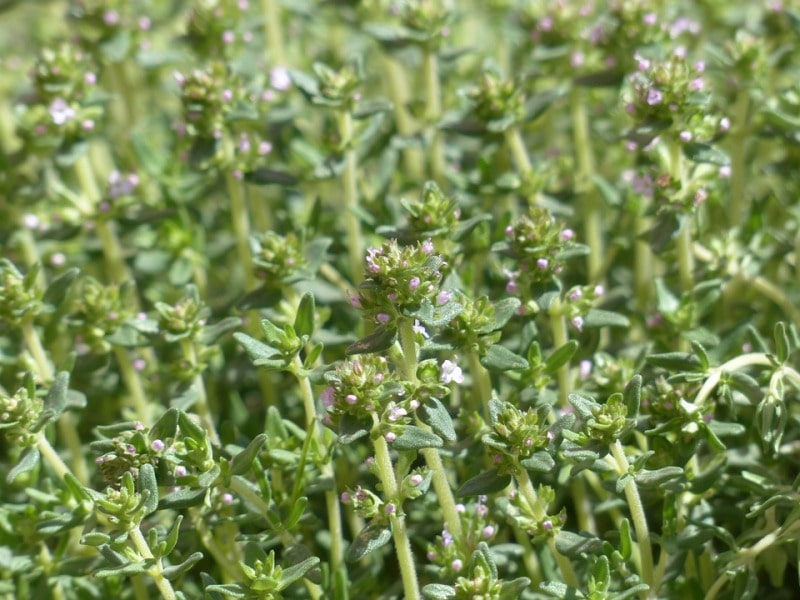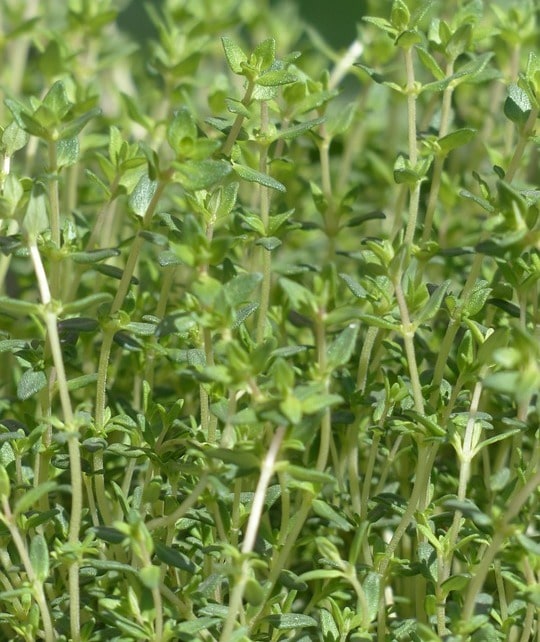A step by step guide for growing thyme hydroponically
We discuss the growing thyme hydroponically and a hydroponic nutrient solution required for thyme herb, hydroponic thyme care, and harvesting process of hydro thyme. Thyme is one of the herbs which no cook should be without! It enriches your food with mouth-watering fragrance and delicious flavor. It is a highly rated member of aromatic herbs or shrubby plants belonging to the Mint Family, cultivated since a long time and valued as both ornamentals and sweet herbs. They bear small lavender or pink flowers and which can be planted in the hydroponic garden as an ornamental plant, or in your herb garden, to be utilized for seasoning. The thyme plant is a versatile and beautiful plant to grow both in an herb garden and in your garden in general for adding aesthetic beauty. Thyme plants can be cultivated easily and further multiplied from cuttings or thyme seed.
Hydroponics is proven to be an ideal cultivation method for producing culinary and medicinal herbs. Not only the hydroponic herbs grow faster but they also have significantly more flavor and aroma than herbs grown in soil and credits goes to maintained growing environment and less infestation of disease and insect under hydroponics. So for the question how to grow thyme indoors answer is hydroponics one might favor growing thyme in pots but dear friends hydroponics will save you from a lot of troubles and give you more yield.

Hydroponic thyme seed germination
The thyme plant can be raised from seed, but commonly people prefer to avoid growing thyme from seed. The reason is thyme seeds are difficult to germinate and can take a longer time to sprout. For thyme seed germination place thyme seed in pre-moistened grow media like vermiculite,coco-coir or perlite starter cubes, they may sprout out in 8 to 20 days. Because the seeds are tiny in size, so it is advised that thyme seeds should be sown very shallowly. As the young seedling reaches the height of 2 to 3 inches your seedlings are ready to leave the nest and can be transplanted to the hydroponic system. During germination temperature should be maintained at 65°F to 70°F.
You should also check the Growing Beetroot Hydroponically.
Another method of propagating thyme is by dividing the roots, tip cuttings (cutting) of mature thyme plant, this method is often preferred because of its ease and it is a fast-growing method too.
Sun and lighting requirements for hydroponic thyme
Thyme prefers full sun which can be made available easy when growing outdoors. Thyme can also be grown indoors satisfactorily with the help of standard fluorescent lamps, and remarkably well by using high output T5 fluorescent, compact fluorescent, or high-intensity discharge (metal halide or high-pressure sodium) specialized growing lights. You should keep standard fluorescent lamps between 2 and 4 inches from the tops of the plants, high output, and compact fluorescents should be kept approximately one foot above the plants, and HID lights should be placed between 2 and 4 feet above the plants so that they don’t cause overheating. Keep rotating the plant to ensure that all sides receive sufficient coverage.
Having an oscillating fan gently aerating seedlings for at least 2 hours per day is also value addition to your system. This will stimulate shorter, sturdier, and more natural plant habit in developing a thyme plant.
The nutrient solution required for growing thyme hydroponically
Nutrients – specifically designed for hydroponics are one more key component of growing hydroponic thyme. Combining fertilizer and water create the “nutrient solution.” You can do this yourself or we would suggest you to but ready to use hydroponic nutrient solution designed for thyme. It is suggested to drain, clean and re-add a new nutrient solution to keep up optimal conditions. This process should be done at least once a month, although more often is encouraged. Methods for providing the nutrient solution consist of the Passive method (which permits you to choose when and how much nutrient solution a plant needs, devoid of the use of pumps and timers), the Flood and Drain method (when grow trays and pots are flooded with the nutrient solution with the help of a pump), a Drip System, the Nutrient Film Technique (NFT) and the aeroponic method. All of these methods are used for growing thyme successfully.
You should not miss the Growing Zucchini Hydroponically.

Maintain the following attributes to facilitate ideal growth
pH 5.5-7.0 CF 8-16 PPM560-1120
Harvesting of hydroponic thyme
Harvest thyme just before the flowers starts to open, by cutting the plant one and a half to 2 inches above from the ground. A secondary growth will develop but this should not be cut all at once. This would diminish the plant’s winter hardiness. While a hardy perennial, thyme plants require care over the winter months to endure the cold
After harvesting, put down the cut plants on sheets of newspaper or fine screen and permit them to dry in the warm shade. When dry, the leaves will separate from the woody stems without difficulty if rubbed lightly.
Every spring cut thyme plants come back to half its previous height to maintain the tender stems and bushy plant habit. After 3 to 4 years plants will turn out to be woody and you will have to start over again from seed as its cycle will be complete.
You may be interested in the Sheep Farming Business Plan for Maximum Profit.